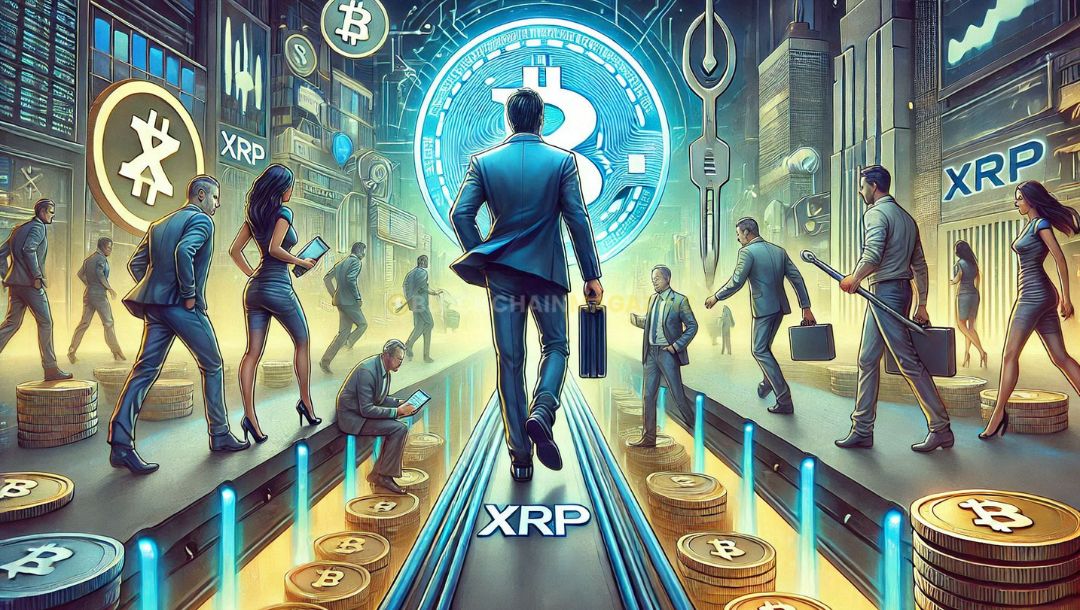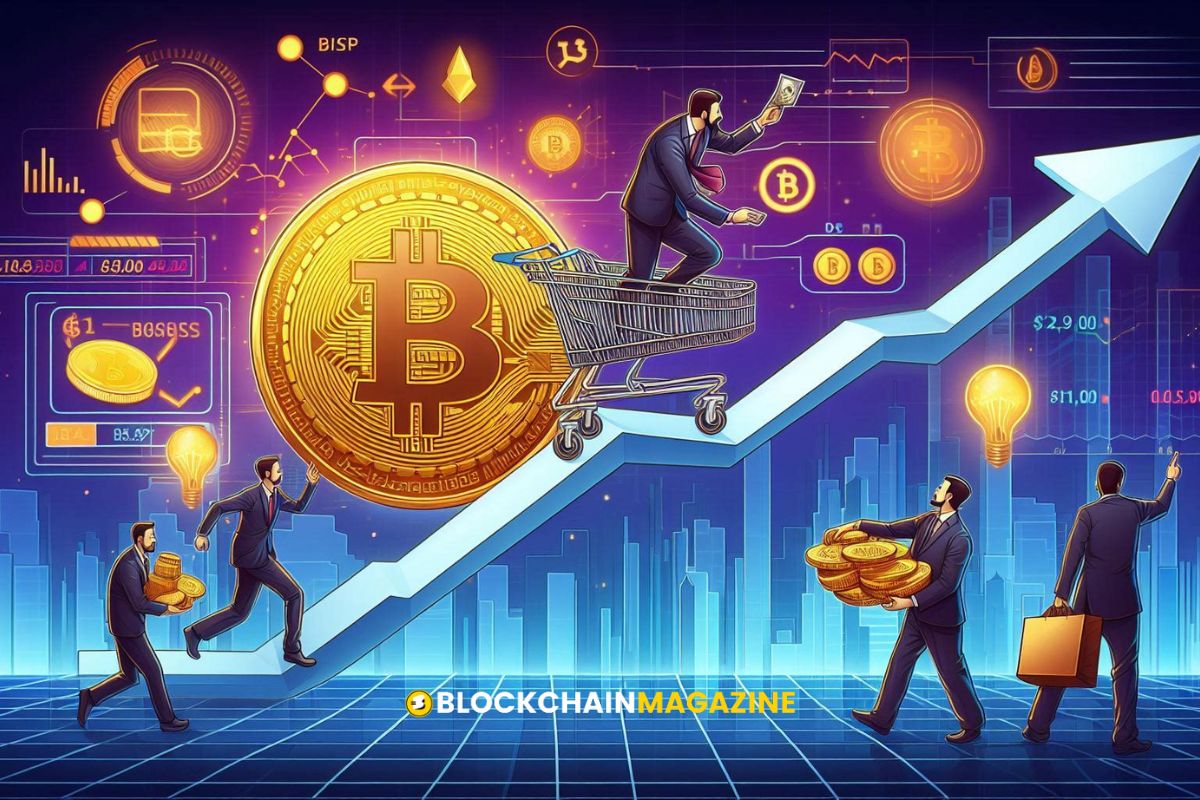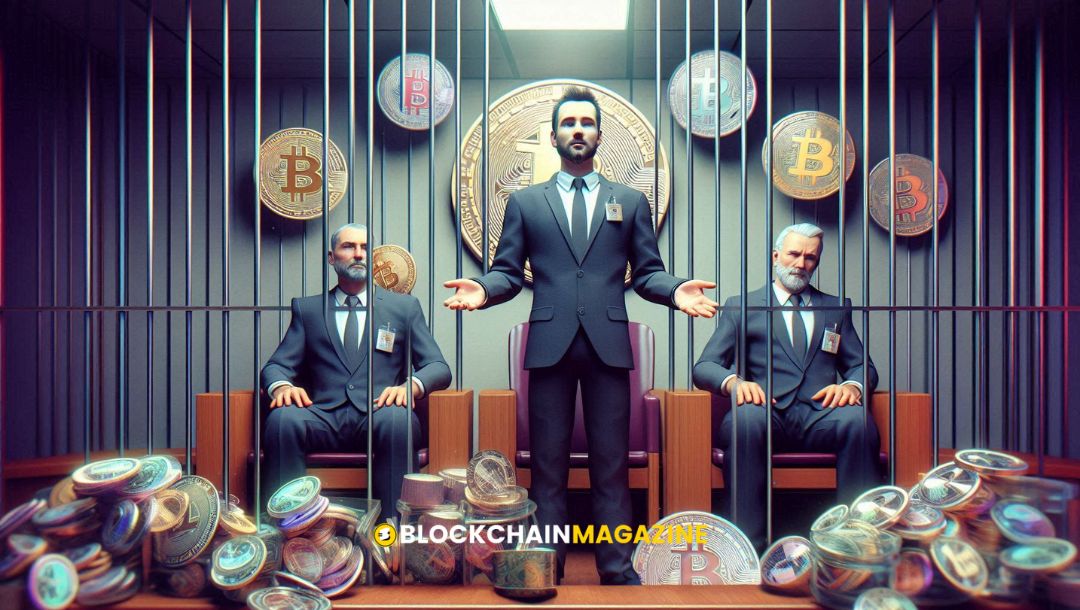Key Reasons for XRP Crypto Popularity In This Crypto Market
XRP crypto is making waves in the digital currency world, and it’s not hard to see why. With a history that dates back to 2012, XRP has been steadily gaining traction among investors and financial institutions alike. It’s not just another digital coin; it’s a tool that’s transforming how money moves across borders. From its role in the financial markets to its technological perks, XRP is a topic worth exploring. Let’s dive into the key takeaways that explain why XRP is becoming a favorite in the crypto scene.
Key Takeaways
- XRP has a long-standing presence in the crypto market, having been launched in 2012, which gives it a solid foundation.
- It serves as a bridge currency, making cross-border payments faster and more affordable for financial institutions.
- XRP is known for its scalability and speed, processing transactions much quicker than many other cryptocurrencies.
- The crypto has gained popularity due to its lower environmental impact compared to other digital currencies.
- Legal and regulatory challenges have shaped XRP’s journey, but recent developments suggest a more favorable outlook.
Understanding the Rise of XRP Crypto
Historical Context and Development
XRP, the brainchild of Ripple Labs, isn’t a new player in the crypto world. It made its debut back in 2012, which feels like ages ago in crypto years. Ripple Labs launched the XRP Ledger with a whopping 100 billion tokens, setting the stage for a digital asset that was all about speed and efficiency. Unlike Bitcoin, which is more about being a store of value, XRP was designed to facilitate quick and cheap transactions. This unique focus has helped XRP carve out a niche in the financial world.
Key Milestones in XRP’s Growth
- 2012: XRP Ledger launched with 100 billion tokens.
- 2014: Ripple Labs started forming partnerships with financial institutions, marking its entry into mainstream finance.
- 2017: XRP’s price surged, catching the attention of investors globally.
- 2024: XRP’s price rose fivefold, making it the third-largest cryptocurrency by market cap.
Comparison with Other Cryptocurrencies
When you stack XRP against other big names like Bitcoin and Ethereum, some differences pop out. First off, XRP transactions are super fast, taking just a few seconds. Bitcoin, on the other hand, can take up to an hour. Then there’s the cost—XRP’s transaction fees are a fraction of a cent, while Bitcoin’s can go much higher. And let’s not forget the environmental angle. XRP’s consensus algorithm doesn’t require energy-intensive mining, making it a more eco-friendly choice. In a world increasingly concerned with sustainability, this could be a big plus for XRP.
The Role of XRP in Financial Markets
XRP as a Bridge Currency
XRP has carved out a niche as a dependable bridge currency in the financial markets. It connects various fiat currencies, making cross-border transactions faster and cheaper. Unlike traditional systems that rely on multiple intermediaries, XRP simplifies the process, reducing transaction costs and time. This efficiency is why many financial institutions choose XRP for international payments.
Impact on Cross-Border Payments
The impact of XRP on cross-border payments is significant. It offers a solution to the age-old problem of slow and costly international transactions. With XRP, transactions are settled in seconds, not days, and at a fraction of the cost. This speed and affordability are transforming how businesses and individuals send money globally, making XRP a popular choice in the financial sector.
Adoption by Financial Institutions
Financial institutions are increasingly adopting XRP for its benefits in streamlining operations. Banks and payment providers use XRP to enhance liquidity and reduce operational costs. This adoption is not just about efficiency; it also opens new revenue streams by enabling faster and more reliable services for customers. As more institutions recognize these advantages, XRP’s role in the financial markets continues to grow.
XRP is reshaping the financial landscape by offering a robust alternative to traditional banking systems. Its adoption by major financial players underscores its potential to revolutionize cross-border transactions.
Technological Advantages of XRP Crypto
Scalability and Speed
When it comes to scalability and speed, XRP stands out in the crypto world. Unlike Bitcoin, which can be slow and cumbersome, XRP boasts a transaction speed that’s hard to beat. It typically takes only about 3 to 5 seconds for an XRP transaction to settle. Compare that to Bitcoin’s 500 seconds, and you see why XRP is gaining traction. Not only is it fast, but it can also handle around 1,500 transactions per second. This scalability makes it a top choice for those needing quick and efficient transaction processing.
Environmental Considerations
In today’s world, sustainability matters more than ever. XRP is designed to be environmentally friendly. Its energy consumption is negligible compared to Bitcoin, which requires significant energy to operate. This makes XRP a more sustainable option for those who are conscious of their environmental footprint.
Security Features
Security is a big deal in the crypto space, and XRP doesn’t disappoint. It uses advanced cryptographic algorithms to secure transactions and maintain the integrity of the ledger. This ensures that transactions are not only fast and cheap but also safe from tampering or fraud.
XRP’s technological edge lies in its ability to deliver fast, secure, and environmentally friendly transactions, setting a benchmark for future blockchain innovations.
Market Dynamics Influencing XRP Popularity
Trading Trends and Patterns
XRP has been riding a wave of trading activity, partly thanks to platforms like Robinhood, which recently relisted the token. This surge in trading has created a buzz, particularly among retail investors. When platforms like Coinbase see increased activity, it often leads to a price premium for XRP compared to other exchanges. South Korean exchanges like Upbit and Bithumb have seen XRP trading volumes surpass Bitcoin, which is quite the feat. Such trading frenzies can push XRP’s price upward, attracting more traders and investors.
Influence of Political Events
Political shifts have a knack for stirring the crypto pot. The resignation of SEC Chair Gary Gensler, who wasn’t exactly a crypto enthusiast, has been seen as a positive sign for XRP. With his departure, there’s hope that the long-standing legal battles might ease up, giving XRP more room to grow. Political events, like changes in regulatory leadership, can lead to shifts in market sentiment and price movements.
Community and Social Media Impact
The XRP community is a force to be reckoned with. They’re active, vocal, and they rally behind the token with gusto. This community-driven enthusiasm often spills over into social media, amplifying XRP’s presence and appeal. Social media trends and news can cause significant price swings, as seen with other cryptocurrencies. A supportive community can drive positive sentiment and increase demand, which in turn can boost XRP’s value.
The dynamics of the crypto market are ever-changing, influenced by a mix of trading patterns, political shifts, and community engagement. XRP’s journey is a testament to how these elements come together, shaping its path in the crypto world.
Legal and Regulatory Factors Affecting XRP
SEC Allegations and Outcomes
The legal saga between Ripple and the SEC has been a rollercoaster. When the SEC first accused Ripple of selling XRP as an unregistered security, it sent shockwaves through the crypto world. This lawsuit has been pivotal, as its outcome could set a precedent for how cryptocurrencies are classified in the U.S. market. Ripple’s defense argues that XRP functions more like a currency than a security, drawing parallels with Bitcoin and Ethereum. As the case drags on, the uncertainty affects XRP’s price and market perception.
Impact of Regulatory Changes
Regulatory changes can make or break a cryptocurrency. For XRP, the evolving landscape of crypto regulations is particularly impactful. The new administration under Trump, with its pro-crypto stance, might favor looser regulations. This could potentially end the SEC’s case against Ripple, allowing XRP to flourish. On the flip side, stricter regulations could stifle innovation and limit XRP’s adoption.
Future Legal Considerations
Looking ahead, XRP’s legal challenges are far from over. The possibility of new regulations or international legal hurdles remains. However, if the current case resolves favorably, it could open doors for XRP, enhancing its credibility and encouraging institutional adoption. The crypto community is keenly watching how these legal battles unfold, as they will likely influence XRP’s future trajectory.
The legal landscape for XRP is complex and ever-changing, but with each twist and turn, the crypto community remains hopeful for a resolution that could redefine the rules for digital assets.
Future Prospects for XRP Crypto
Predictions and Market Speculations
XRP has been on a rollercoaster ride, but there’s no denying its potential. Many analysts are optimistic about its future, especially with the possibility of a more crypto-friendly administration in the U.S. XRP is predicted to soar over the next few years, especially if regulatory hurdles are cleared. Some speculate that the token could see a significant price increase if the SEC’s case against Ripple is resolved favorably. The introduction of Ripple Liquid USD, a stablecoin, could also stabilize XRP’s value, making it an attractive option for investors.
Potential for Institutional Adoption
The growing list of financial institutions adopting XRP for cross-border payments is a strong indicator of its potential. With over 300 institutions already on board, the adoption of XRP is likely to grow, especially as more banks look for efficient and cost-effective ways to transfer money internationally. This increased adoption could lead to more custom wallets and crypto banking platforms that support XRP, enhancing its liquidity and appeal.
Innovations and Developments Ahead
Ripple Labs continues to push the boundaries with new developments and innovations. The company’s focus on expanding its ecosystem and promoting XRP for cross-border payments is a testament to its commitment to growth. As XRP continues to evolve, we can expect more technological advancements that will enhance its functionality and user experience. This ongoing innovation could play a crucial role in maintaining XRP’s position in the market.
The future of XRP looks promising, with potential growth driven by regulatory changes, institutional adoption, and technological advancements. However, like all cryptocurrencies, it remains subject to market volatility and external factors. Keeping an eye on these developments will be key for investors and enthusiasts alike.
Conclusion
So, there you have it. XRP’s rise in the crypto world isn’t just a fluke. It’s got a lot going for it—speed, cost-effectiveness, and a growing acceptance among financial institutions. Plus, the political winds seem to be blowing in its favor, which could mean even more growth down the line. But like with any investment, it’s a bit of a gamble. The crypto market is unpredictable, and while XRP has a lot of potential, it’s always wise to tread carefully. Keep an eye on the market trends and regulatory changes, and you might just find yourself riding the next big wave in crypto.
Frequently Asked Questions
What is XRP and when was it created?
XRP is a digital coin made by Ripple. It started in 2012 as a way to help banks and people move money faster and cheaper.
How does XRP differ from Bitcoin?
XRP and Bitcoin are both digital coins, but they are used differently. Bitcoin is like digital gold, while XRP is used to make quick and cheap money transfers.
Why is XRP popular among financial institutions?
XRP is popular with banks because it helps them send money across borders quickly and at a low cost. It acts as a bridge between different currencies.
What are the environmental benefits of using XRP?
XRP is considered better for the environment because it uses less energy to process transactions compared to other cryptocurrencies like Bitcoin.
What were the SEC allegations against Ripple and XRP?
The SEC claimed that Ripple sold XRP as an unregistered security. This led to a legal battle, but Ripple won in court, which was seen as a victory for XRP.
What is the future outlook for XRP?
Many believe XRP has a bright future, especially if more banks and businesses start using it for transactions. Its price might go up if legal and regulatory issues are resolved.
Stay informed with daily updates from Blockchain Magazine on Google News. Click here to follow us and mark as favorite: [Blockchain Magazine on Google News].
Get Blockchain Insights In Inbox
Stay ahead of the curve with expert analysis and market updates.
latest from tech
Disclaimer: Any post shared by a third-party agency are sponsored and Blockchain Magazine has no views on any such posts. The views and opinions expressed in this post are those of the clients and do not necessarily reflect the official policy or position of Blockchain Magazine. The information provided in this post is for informational purposes only and should not be considered as financial, investment, or professional advice. Blockchain Magazine does not endorse or promote any specific products, services, or companies mentioned in this posts. Readers are encouraged to conduct their own research and consult with a qualified professional before making any financial decisions. The featured image used is just a creative depiction of the title and it does not intend to hurt sentiments of any person or institution. If it hurts anyone sentiments, please do not hesitate to reach out to Blockchain Magazine.

 Bitcoin
Bitcoin  Ethereum
Ethereum  XRP
XRP  Tether
Tether  Solana
Solana  Dogecoin
Dogecoin  USDC
USDC  Cardano
Cardano  Lido Staked Ether
Lido Staked Ether  TRON
TRON  Chainlink
Chainlink  Avalanche
Avalanche  Wrapped stETH
Wrapped stETH  Stellar
Stellar  Wrapped Bitcoin
Wrapped Bitcoin  Sui
Sui  Hedera
Hedera  Toncoin
Toncoin  Shiba Inu
Shiba Inu  WETH
WETH  Polkadot
Polkadot  Parkcoin
Parkcoin  LEO Token
LEO Token  Litecoin
Litecoin  Bitcoin Cash
Bitcoin Cash  Bitget Token
Bitget Token  Uniswap
Uniswap  Official Trump
Official Trump  Hyperliquid
Hyperliquid  Wrapped eETH
Wrapped eETH  Pepe
Pepe  USDS
USDS  NEAR Protocol
NEAR Protocol  Ethena USDe
Ethena USDe  Aave
Aave  Aptos
Aptos  Internet Computer
Internet Computer  Ondo
Ondo  Ethereum Classic
Ethereum Classic  Monero
Monero  POL (ex-MATIC)
POL (ex-MATIC)  OKB
OKB  Cronos
Cronos  Mantle
Mantle  Dai
Dai  Algorand
Algorand  MANTRA
MANTRA  Render
Render 




